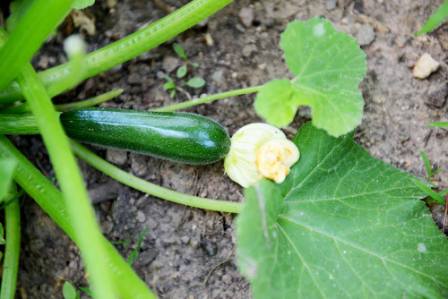by Amy Todisco, Green Living Expert and Organic Farmer
Have you given much thought to where to plant your organic vegetable garden? It’s a very important first step.
You don’t want to go through the hard work of creating a garden designed to grow healthy organic food only to find out that there is some toxic substance (such as lead dust, paint chips, stain, or some other toxic product) that was scraped, sanded or power washed off your home and now sits in your soil.
First, let’s define what it means to grow organically.
Essentially growing organically means working WITH nature, not against it. Instead of just feeding the plants, you are feeding the soil with recycled natural materials (such as compost) and other naturally occurring inputs (such as liquid seaweed and fish emulsion, or green sand, bone meal, etc.).
It means not relying on synthetic chemicals for pest and disease control or nutrients. It is operating with the understanding that there is a fine balance in the natural world that allows all living things to coexist without one becoming dominant. I think of it like this: we all have cancer cells in our bodies, but a healthy body does not allow those cancer cells grow and take over. In the same way, a healthy garden will not allow predators and diseases to take over; instead it will all be kept in balance.
Why is this important to us? There seem to be three main reasons that people choose to grow their food organically: concern for human health, the environment, and their pocketbook. There are so many things to be concerned about in our environment polluting, unhealthy conventional food producing system, not the least of which is the genetically engineered food “experiment”. It’s a wise person who knows how to grow their own food without toxic chemicals.
Back to your garden location. It’s best not to plant edible foods, such as veggies, herbs, or edible flowers (e.g. nasturtiums) near your home’s foundation.
And, you need at least 6-8 hours of full sun for most plants. If the leaves haven’t fully bloomed on your trees yet, anticipate how much shade they will create.
What about a water source?
Do you have a hose that reaches to your garden spot or will you have to carry buckets or watering cans multiple times if there’s a dry spell? Vegetable plants need 1 – 2 inches of water each week especially from mid June to mid August.
And, is there chlorine in your home’s drinking water, or some other toxin? It’s a wise gardener (and homeowner) that has their water tested for contaminants, and if there are some found, to seek out a good tap water filter. Watercheck.com is a good testing company, and I have some good recommendations for tap water filters, depending upon what you find. Your garden water should be as pure as possible too. If your water is chlorinated, it may affect your plants negatively as the chlorine can kill the beneficial organisms in your soil and deter beneficial insects, like ladybugs.
What to do? Try a Rainshow’r Gard’n GroTM Garden Dechlorinator. It attaches to your garden hose. Also, if possible, choose a non pvc garden hose. It’s not as big a deal with cold water (be sure to run the water through your hose until it’s cold. You don’t want to use the warm water that may be sitting in your hose in the sun for a while as it’s possible that some plastic contaminants could leach from the hose into your water.
Do Good Fences Make Good Gardens?
Do you have a lot of wildlife, such as deer, rabbits, groundhogs, etc.? You may need to create a fence. Or are there many neighborhood dogs or even chickens that sometimes run loose around your property? Also, FYI–cats find lovely garden soil to be the ideal cat litter. I’ve used wooden posts and bird netting from Home Depot to create a fence. It should be at least 4 feet high. And, be sure to create a door or some way to access the garden other than having to climb over the top. Even if you are very athletic, it’s tricky carrying things up and over the fence. You can also create a “fruit cage” for even better protection.
To get your own step-by-step guide to growing organic food (in the ground, in pots on a sunny deck, inside on your windowsill, or just organic sprouts) check out my 8 week Email course, How To Grow Organic Food.
